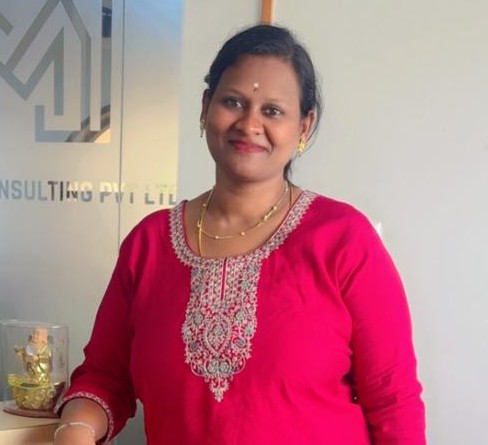I’ve spent thirteen years in fintech, and I need to tell you something: we’re all celebrating progress that doesn’t actually exist.

Every conference, every panel discussion, someone stands up and talks about how amazing things are now. Look at all these apps for women! Look at the female founders! Look how inclusive we are!
But here’s what’s really happening: women still have less money, can’t get loans as easily, pay more for everything, and can’t access the tools that actually build wealth.
We didn’t close the gap. We just made it prettier and slapped a “girl power” sticker on it.
And I’m so tired of pretending this is okay.
We’re fixing problems that don’t actually matter
Here’s what happens in every fintech company meeting I’ve been in:
Someone says, “Women are underserved.” So the team builds an app. They make it purple or pink. Add some budgeting features. Write copy about “treating yourself” and “money confidence.” Then they call it empowerment.
I’ve literally seen pitch decks for “fintech for women” that are just normal banking apps with millennial pink colors and really condescending language.
This isn’t innovation. It’s insulting.
The real problems women face have nothing to do with needing softer colors or someone holding their hand. The problems are big, structural, and baked into the entire system. And nobody wants to talk about them because actually fixing them would mean disrupting things for real instead of just redecorating.
Women don’t need another app telling them to skip buying coffee. Women need access to money to start businesses. They need investment options that don’t assume they’re scared of risk just because they’re female. They need lending systems that don’t punish them for taking time off to raise kids or for having less credit history because of systemic inequality.
But those problems are hard. And uncomfortable. And expensive to fix.
So instead, we get apps with cute savings games, and everyone acts like we solved something.
The funding problem everyone ignores
Let’s talk about venture capital for a second.
Female founders get a tiny sliver of all VC funding. Tiny.
Now, you’d think an industry that claims to revolutionize financial access would care about this, right? But here’s what actually happens: VCs give money to male-led companies to build products “for women” instead of funding actual women to build their own stuff.
What does that give us? Products designed by people who’ve never lived through the financial problems women actually face. Teams that think they understand women’s money issues because they read a market research report. Apps that treat women like a demographic to sell to instead of people to build with.
I’ve sat in meetings where men pitch “fintech for moms” and there’s not a single mom on their team. Where apps claiming to help women with money are designed by people who’ve never dealt with financial abuse or rebuilding after divorce. Where investment platforms say they empower women, but their investor list is like 95% men.
This isn’t just about fairness—though yeah, it’s about that too. It’s about the fact that we’re building solutions to problems we don’t actually understand, for people we’re not even listening to.
The pink tax just got an app.
You know what’s worse than regular finance discriminating against women? Fintech is finding newer, sneakier ways to do it.
Lending algorithms that use “alternative data” sound cool and innovative until you realize they’re punishing women for stuff like shopping at discount stores or having shorter credit histories. Investment platforms that say they’re for women but automatically steer them toward boring, low-return investments just because of their gender.
We automated discrimination and called it progress.
I’ve seen fintech products that charge women more for “specialized” services that are literally just the same thing men get. Apps that market themselves as empowering while taking bigger cuts of women’s investments. Lending platforms that use AI but have trained that AI on decades of biased data.
The pink tax went digital. And now it’s hiding in algorithms and terms of service that nobody reads.
Getting access doesn’t mean getting equality.
Here’s where fintech really tries to trick you: they created lots of ways to access financial stuff. You can open a bank account on your phone! You can invest with just a few dollars! You can get a loan super fast!
So access went up. But equality? Nope.
Having access to an unequal system just means more ways to fall behind. Sure, a woman can get a high-interest loan instantly now—but she needs that loan because she’s been paid less her whole life, has less savings, and has fewer good credit options. Fintech just made it easier to get trapped, not easier to build actual wealth.
Real equality would look like:
- Closing the pay gap that creates the wealth gap
- Building investment tools that work for people with career interruptions
- Creating lending rules that don’t punish women for being caregivers
- Designing retirement plans for people who didn’t work nonstop for 40 years
- Making business funding available to people who weren’t allowed to build wealth in the first place
But those fixes mean confronting really uncomfortable truths about how our whole economic system works. So instead, we celebrate that women can check their bank balance on a pretty app.
The “women are scared of risk” myth needs to die.
I need to talk about one of the most damaging lies in fintech: that women are naturally more scared of risk than men, so they need different (meaning worse, lower-return) investment products.
This is complete garbage pretending to be smart insight.
Women aren’t more scared of risk. Women just know they have less room for mistakes because the system has been set up against them. That’s not a personality thing. That’s just responding rationally to reality.
When you have less money, fewer safety nets, know you’ll earn less over your lifetime, and know age discrimination hits you earlier—yeah, you’re gonna be more careful. That’s not your personality. That’s math.
But fintech companies use this myth to justify pushing women toward investments that make less money, charging them higher fees for “extra help,” and building products that assume women need more education instead of more opportunity.
I’ve seen investment platforms automatically give conservative portfolio recommendations to women in their 30s while telling men the same age to go aggressive. Robo-advisors that literally factor your gender into their decisions. Marketing that treats women like we need training wheels for investing.
What women actually need: investment products that recognize we’re starting from behind and need higher returns, not lower ones. Access to the same high-growth stuff men get. The ability to take smart risks without someone talking down to us about it.
Tiny loans aren’t helping.
Fintech loves microloans for women. Small loans! Easy credit! Start your business!
You know what microloans actually do? They keep women running tiny businesses instead of giving them the money to grow big.
A $5,000 microloan sounds great until you realize male entrepreneurs are getting $500,000 for the same kind of business. Women get just enough money to stay small, stay local, stay in the “cute women’s business” category that big investors can ignore.
I’ve watched women build million-dollar ideas on microloans while men with way worse concepts get serious money. The fintech industry acts like this is “democratizing access” when really it’s “keeping you in your place with nicer packaging.”
Real equality would mean women getting the same access to serious money that men do. Not crumbs. Not “beginner” funding. Not loans designed to keep you small. Real growth money at the same rates and terms.
But that would require fintech investors to actually mean what their marketing says.
What it would actually look like if we cared
If fintech were serious about closing the gender gap, here’s what we’d see:
Fund female founders equally. Not 2% or 10%. Equally. Same valuations, same terms, same expectations. If we believe in the products we’re building for women, we should believe in funding women to build them.
Check algorithms for gender bias. Every AI system making lending, investing, or credit decisions should have to prove it’s not just repeating historical discrimination. If your algorithm punishes women for structural inequality, it’s not innovative—it’s just old bias at scale.
Build products for real life. Retirement tools, investment platforms, and lending products are designed around the fact that many women have gaps in their careers. Not punishing those gaps, but actually working around them.
Show us what we’re paying. No more “premium” services that are just standard stuff repackaged and upcharged for women. No more algorithms that mysteriously make women pay more. Tell us who pays what and why.
Give us real financial education. Women don’t need to be taught that money is scary or confusing. We need the same sophisticated education about wealth building, taxes, and investing that men get.
Put real money into women-led fintech. Not tiny angel investments. Not “female founder” programs that give you $50K and a photo op. Real funding at real valuations from major investors.
The truth nobody wants to say
Here’s what nobody in fintech wants to admit: you can’t app your way out of inequality that’s built into the system.
No amount of purple branding, savings games, or “confidence” content will fix the fact that women get paid less, own less, and have less access to wealth-building tools. Technology can’t solve these problems without changing the underlying systems that create them.
But changing those systems would mean fintech actually being disruptive instead of just being old finance with better design. It would mean talking about uncomfortable truths like who benefits from keeping things the way they are.
It would mean admitting that financial inclusion isn’t about creating more doors into an unfair system. It’s about changing the system itself.
What I actually want to see happen
After thirteen years of watching fintech claim to revolutionize access while mostly just finding new ways to charge fees, here’s what I want:
Stop marketing to women and start funding them. Stop building products you think women need and start asking what they actually want. Stop celebrating tiny improvements to a broken system and start actually breaking it.
Build lending algorithms that level things out instead of digitizing old biases. Create investment products that help women catch up instead of keeping them behind. Design financial tools that treat caregiving as valuable work, not a career problem.
And please, for the love of everything, stop with the pink interfaces and patronizing copy about “treating yourself.” Women don’t need fintech to make us feel better about having less money. We need fintech that helps us get more of it.
The gender gap in financial access isn’t a business opportunity. It’s a moral failure. And every fintech company claiming to fix it while keeping the fundamental problems in place is just making money off a problem they pretend to solve.
We can do better than this. We should do better. The question is: will we actually try?
Author Bio
I’m Maria Rosey, a certified financial analyst and founder of One Touch Finance, with over 13 years of experience in personal finance, insurance, and banking. I’m passionate about helping people make smarter financial decisions and feel confident about their money. Through my work, I aim to simplify complex financial topics and share insights that empower everyday individuals to build financial freedom.




